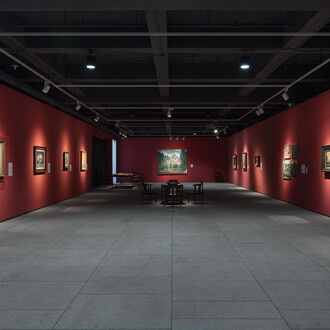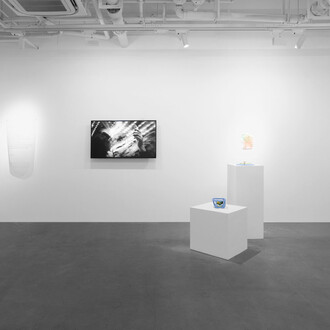50-90 is the final exhibition in the Long Museum’s 10th-anniversary series. As suggested by the title, the exhibition is organized around key time periods, showcasing nearly 90 works from Liu Yiqian and Wang Wei’s collection of global contemporary art. These works were created by artists born between the 1950s and the 1990s, with the majority produced after 1980 and primarily after 2000. The exhibition offers an opportunity to reflect on the continuous evolution of contemporary art worldwide.
The selected works reflect each artist’s dialogue with their specific time and environment, offering a unique opportunity to experience the interplay of generations and regions within a single space. Influenced by diverse cultural backgrounds and life experiences, these artists—while independent in their approaches—engage in active exploration and experimentation, shaped by both global perspectives and local contexts. Wang Wei hopes this exhibition not only serves as a reference for case studies and generational research in global contemporary art but also creates a platform for global artistic dialogue, allowing audiences to experience the richness and diversity of art. Through this final exhibition celebrating the Long Museum’s 10th anniversary, Wang Wei aims to highlight the significance of art in our time, spanning five generations of creative expression. The importance of art today lies not in the pursuit of the “new” or the preservation of the “old,” but in how individual artists, across different eras, choose art as a means to respond to their time and the world, amidst the blending of global civilizations.
The 50s, 60s, and 70s
To start with, this exhibition showcases the artistic journeys of three generations of artists born in the 1950s, 60s, and 70s. Each generation’s work reflects a close connection to the cultural and social experiences of their time. While broader historical trends shaped the artistic movements of each era, individual artists pursued distinct paths in their creative expressions. The works on display offer powerful responses to the realities of their times — some capturing the present, others reflecting on the past or pushing the boundaries of new ideas. Some artists draw inspiration from traditional cultural roots, while others explore the interplay of different cultural influences. Together, their works reflect an ongoing shift toward diversity and multiplicity, highlighting the richness and complexity of artistic expression.
The 80s and 90s
Compared to earlier generations, artists born in the 1980s and 90s place greater emphasis on self-expression and individuality while being deeply shaped by globalization. Although painting remains a prominent medium, rapid technological advancements and the introduction of new materials have profoundly influenced their imagery and creative processes. Their highly personal perspectives reveal imaginative interpretations of everyday objects, an exploration of abstract forces, and a fluid blending of tradition with cutting-edge ideas. Ending the exhibition with these two generations is not about defining a clear artistic path but rather offering a glimpse into the creative vision of younger artists. It invites viewers to experience contemporary art in its current, dynamic form.
















